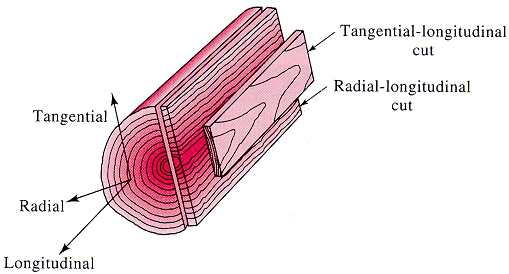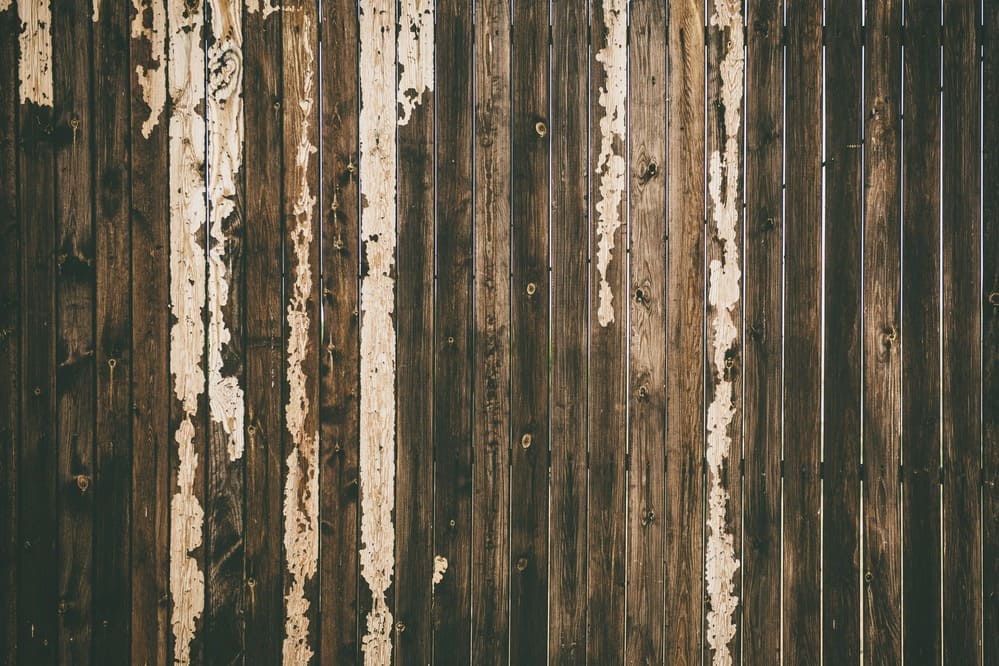This is an informative and comprehensive text on wood. First of all, we will define what wood is. Secondly, we will explain the properties of wood. These characteristics will be divided into three groups: physical, mechanical and special properties.
Índice de la página
What is wood?
Wood is a raw material of plant origin. It is found in the trunks of trees, which grow every year, forming rings in that very same trunk, these circles or rings are called grains and they are unique in each tree. Wood is a renewable, ecological and organic good. It has been used since the origins of humanity until nowadays to produce furniture, buildings, boats, etc.
Material Features of wood properties
Anisotropy
All types of wood have three directions: Axial, Radial, and Tangential.
The axial direction is the direction in which the tree grows (direction of the fibers).
The Radial direction is perpendicular to the axial, in the direction of the spokes, it cuts the axis of the trunk.
The Tangential is parallel to the radial direction, in the direction of the grain and cutting the annual rings.

Hygroscopicity
Hygroscopicity is the ability of wood to absorb moisture from the environment.Wood is a living element even if it is cut, it contracts or expands depending on the humidity. Depending on the type of wood, this effect will be more pronounced or less. Of the three directions that wood has, the axial is the least affected by this property. Tangential shrinkage is almost double that of radial
Density
One of the most important properties of wood is density. Each type of wood has a weight depending on the species and the climatic conditions where the tree has grown. The heavier the wood, the more concentration of fibers and the less space amongst them. Typically the faster a tree grows, the lighter its wood will be. As a general rule, since water is heavy, the weight of the wood is taken into account when it is at 11-12% humidity.
Cleavability
The cleavability is the resistance that the wood opposes to the transverse tensile stress before breaking due to the separation of its fibers. The most splittable woods tend to have long, knotty fibers.
Toughness
Toughness has a lot to do with weight and all woods can be divided into three groups. Hard, soft and semi-hard woods.
Hardwoods: They are slow growing and deciduous.
Softwoods: Coniferous woods are lighter than hard ones, fast-growing trees such as Paulownia.
Semi-hard woods: There are woods that, due to their characteristics, are difficult to classify between the two abovementioned categories and remain in this sub-group between hard and soft.
Flexibility
The flexibility of wood is measured in the ability of the wood to bend without breaking and without returning to its initial position.
Stability
Stability is the reaction that wood will have to changes in temperature. A stable wood is one that will not contract or expand much due to variations in temperature.
Optics
Each wood has its color and texture. Some woods, thanks to their grain or knots, enhance their appearance. The ultraviolet rays of the sun, darken the wood in the first layer or bark. This can be avoided with varnishes, enamels, lacquer or stains.
Smell
The smell is produced in the heartwood of the wood thanks to some natural chemical components of the wood. The heartwood is the central part of the trunk.
Biological
Wood is a living, biodegradable good, so it rots and can be affected by insects, fungi and bacteria. When woods have more than a 20% humidity level, they are more prone to these irreversible attacks. Some are stronger than others due to a higher concentration of lignin.

Mechanical Properties of Wood
Resistance
The heavier a wood is, the more resistance it will normally have. Although there are some woods that have a better strength-to-weight ratio than others.
Traction
The greatest resistance of a wood is in the direction of the fibres and the least in a perpendicular direction to them. Tensile rupture occurs suddenly.
Compression
As we can see in the image above, compression shows us that the denser the wood, the more resistant to compression.
Flexion
It is an effort applied in the horizontal direction of the fibers, this causes the upper fibers to shorten and the lower ones to lengthen.
Elasticity
This value varies a lot depending on the species and how the load is applied and for how long.
Buckling of wood
It is when the wood, after applying a compression, bends on the side of least resistance.
Fatigue
Maximum stress that a wood can withstand before breaking
Cutting Strength
As the name itself indicates, it is the resistance to cutting of the wood. It can be in the direction of the grains or against them.
Special wood properties
Acoustics
A wooden structure bounces the sound, so it is used in spaces where we want the sound to reach all sides by bouncing and not going through the material. This property is useful, for example, in musical instruments and concert halls.
Thermal
Due to its porosity, wood is not a good conductor of heat and is therefore limited as a thermal insulator. The flash point of wood is 200° to 275°C.
Technical Data Sheet of Real and Professional Wood with Material and Mechanical Properties
Next, by clicking on the button, you will be able to see a technical sheet at a professional level, for plywood by the GREEMAP company.
